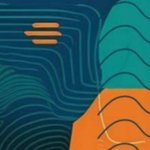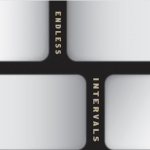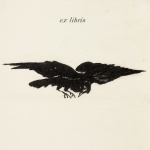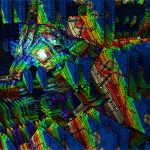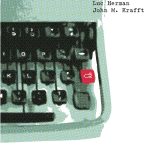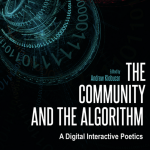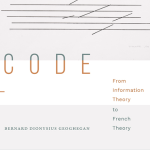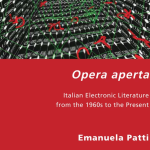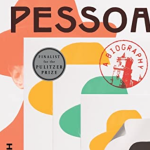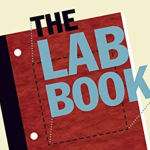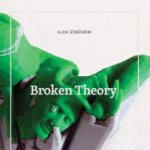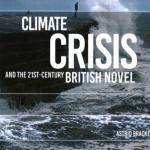2025
Cecily Raynor reviews Cartografía crítica de la literatura digital latinoamericana, a collection of essays that shines the spotlight on the vast and diverse corpus of Latin American electronic literature.
Will Luers contributes to current debates on AI by engaging with Jeffrey West Kirkwood's Endless Intervals: Cinema, Psychology, and Semiotics. Luers examines the parallels between AI and cinema technology as "thinking machines," both structured around intervals that produce perceptual and conceptual unities. What we have, in cinema and AI no less than human cognition, "is a reevaluation of the unity of consciousness."
Gabriela Jarzębowska reviews Interpreting Meat by Teddy Duncan Jr. By unmasking the hidden libidinal and discursive investments in meat, Duncan urges us to imagine a different kind of relationship with animals—one grounded not in domination or guilt, but in awareness, responsibility, and a reshaping of desire itself.
2024
Research-librarian John-Wilhelm Flattun reviews Tactical Publishing: Using Senses, Software, and Archives in the Twenty-First Century by Alessandro Ludovico. In the digital era of reading and writing — where new forms are constantly emerging old traditions wither away — how can we navigate the ever-changing landscape of publishing?
Lea Laura N. Michelsen reviews Machine Vision: How Algorithms are Changing the Way We See the World by Jill Walker Rettberg. Machine vision is all around us, for good and bad, but who has the power to influence how we use it?
A total solar eclipse occurs when the moon slides between the sun and the Earth, aligned precisely so that the lunar body appears to block the solar surface entirely from view. In this autobiographical essay, Steve Tomasula, an Illinois-based writer known for collaborative image-text assemblages, from TOC to Ascension, that convey how and why humans’ existential sense of reality can vary so radically across time and space, recalls an April 2017 Midwestern road-trip pursuing the path of the total eclipse. In Tomasula’s account of the totality, the multiple meditations surrounding this predictable celestial event only intensify the sublimity of the shared experience and its disruptive systemic effects.
Little is know about the famously private Thomas Pynchon, but can we learn anything from an early manuscript of V.? Hanjo Berressem reviews Becoming Pynchon by Luc Herman and John M. Krafft.
Daniel Punday reviews Andrew Klobucar’s edited collection of essays, The Community and the Algorithm: A Digital Interactive Poetics.
2023
Is it possible to discover digital prophecies in thinkers like Lacan, Barthes, Derrida, Foucault, Deleuze, and Baudrillard? Heckman has a go at it in this close reading of Dionysius Geoghegan's Code: From Information Theory to French Theory.
Martin reviews Astrid Ensslin's Pre-Web Digital Publishing and the Lore of Electronic Literature, a book that addresses the knowledge gaps surrounding the early era of digital creation and publishing, while testifying to the necessity for multidisciplinary approaches to this field of study. Martin discusses the reconstructivist stance from which Ensslin labors to embed digital literature into our larger understanding of the literary arts.
In his review of Mark Amerika's My Life as an Artificial Creative Intelligence (2022), David Thomas Henry Wright highlights Amerika's negotiation of human, nonhuman, symbiotic creative practices in comparison with more traditional (including traditionally experimental) forms of writing.
Starting with Umberto Eco's 1962 essay, "Opera aperta," and progressing into Emanuela Patti's tentative forays into Italian Electronic Literature from the 1960s to the Present, Roberta Iadevaia nicely locates a trajectory for Italian e-Lit, albeit one that is still open, "in contention," without any "encyclopedic guarantee, and no single world order on which our imaginative projections can rest."
For Fernando Pessoa, as for the roughly 600 texts that make up his Book of Disquiet, and the estimated 136 heteronyms that Pessoa inhabits in his own writing, there "is life, and there is writing, and they must remain immiscible." Richard Zenith's attentive biography of Pessoa succeeds, in the words of Portuguese literary scholar Manuel Portela, in "forming a homogeneous mixture" when all of the names and textual experiences are brought together in a single, biographical narrative.
2022
What is a humanities lab? How do we distinguish between a lab in the humanities and a lab in STEM--especially in various lab processes and factors that include "technicians, technologies, traditions, techniques, and trajectories"? In his review of Darren Wershler, Lori Emerson, and Jussi Parikka's book The Lab Book, Jason Lajoie outlines the ways in which labs and lab culture have expanded to make room for making.
In his review of Broken Theory by new media artist and theorist Alan Sondheim, Aden Evens traces Sondheim's eclectic and stylistic meditations on the limits of philosophy, language, and code, expressed through the author's experimental art and research projects. Sondheim's fragmentary monograph and Evens' review by extension explore the inevitability of failure as an 'ontological guarantee' and suggest writing as a necessary—albeit inadequate and unfulfilling—response.
2021
Leah Henrickson explores the contexts surrounding the publication of The Policeman's Beard is Half Constructed, advertised as “the first book ever written by a computer” at the time of its release in 1984. Drawing from contemporary reviews, personal correspondence with the book’s creators, and analysis of the book itself, Henrickson offers insight into precisely how this book was produced, and by whom. Although a computer program called Racter is listed as the author of The Policeman’s Beard, this attribution does not accurately reflect the human labor driving the book’s development and dissemination. This essay illuminates these networks of human labour that ultimately led to Racter and The Policeman's Beard.
2020
In this review of Asemic: The Art of Writing, Diogo Marques considers alongside author Peter Schwenger the seemingly asemantic style of asemic writing as a genre taking on new meaning in contemporary reading and writing networks, particularly in light of the paradigm shifts they continue to undergo as brought about by digital media.
Sarah Whitcomb Laiola insightfully analyzes Stephanie Strickland’s recent poetry book, looking into how Strickland continues the tradition of poetic text generation, engaging at the same with material constraints resulting from 17th century pattern-ringing. The practice consists of competing teams ringing church bells based on highly complex mathematical patterns. Building on these, the poet and her team created elaborate and complex algorithms that generate the poetry woven out of textual data harvested from writings of Sha Xin Wei, Simone Weil, Hito Steyerl, and Yuk Hui among others. Written with Python code, the work demonstrates the powerful “poetics of juxtaposition”, where the list of names of Black men and women subjected to state-sanctioned violence strongly resonates throughout the whole texts.
2019
Elizabeth Callaway reviews Astrid Bracke's Climate Crisis and the 21st Century British Novel, which she uses as a jumping off point to explore the possibilities of a "soft" representation of climate in realist literary fiction, in particular Zadie Smith's NW.
Between the manifesto and the treatise, the text and the paratext, the theoretical and the poetic, the aphoristic and the systematic: Manuel Portela situates the "expressive richness" of Johanna Drucker's "General Theory," and its critique of present social and political formations.
